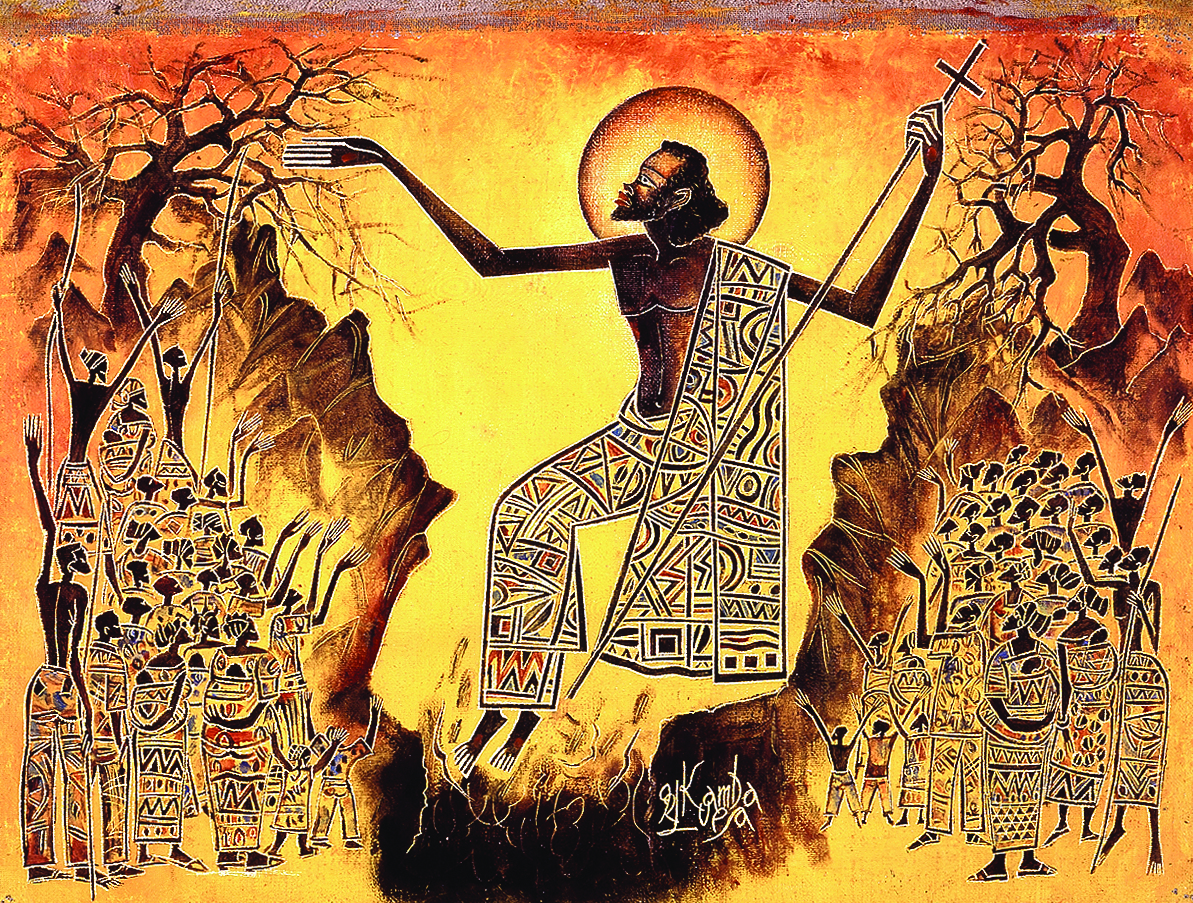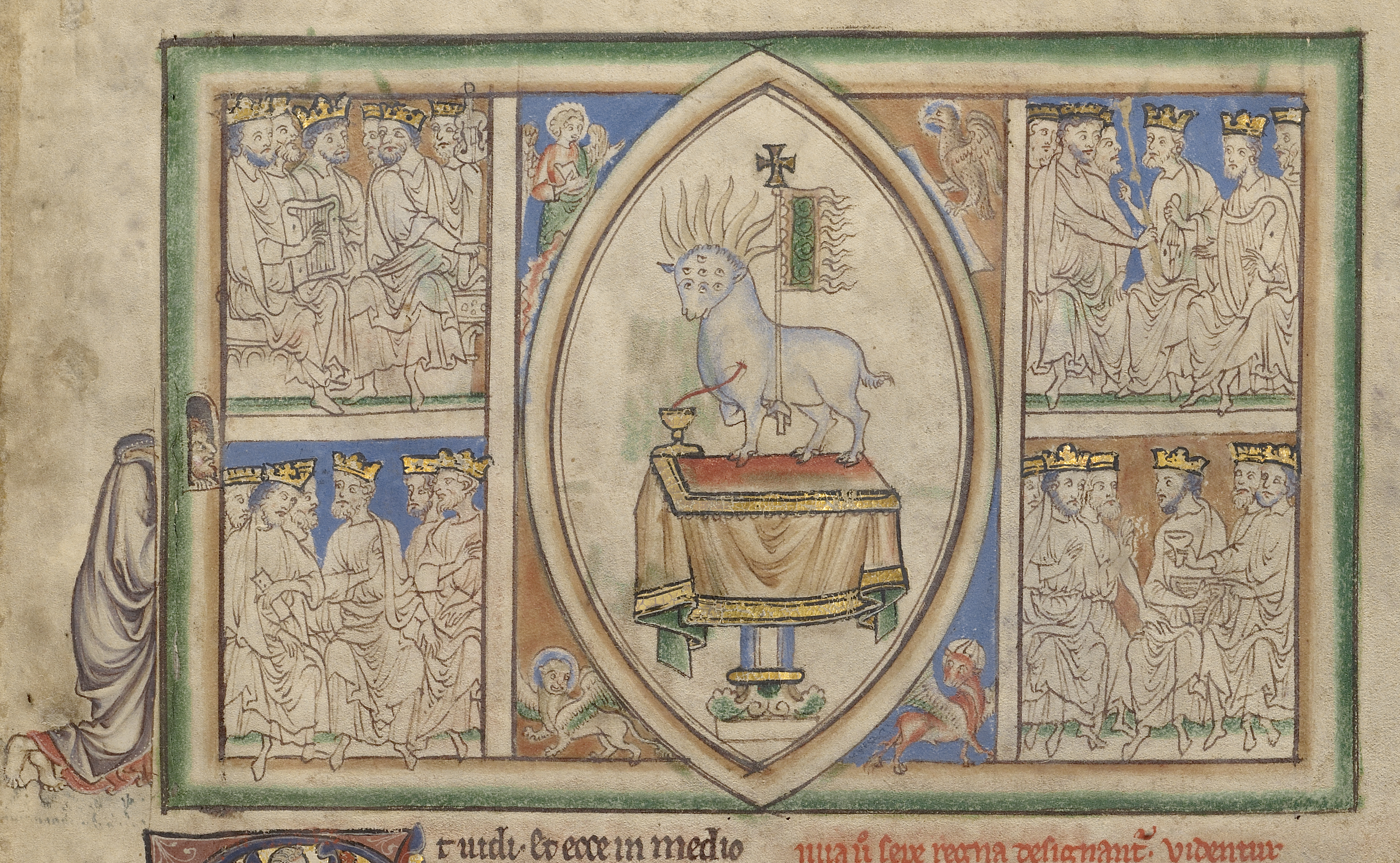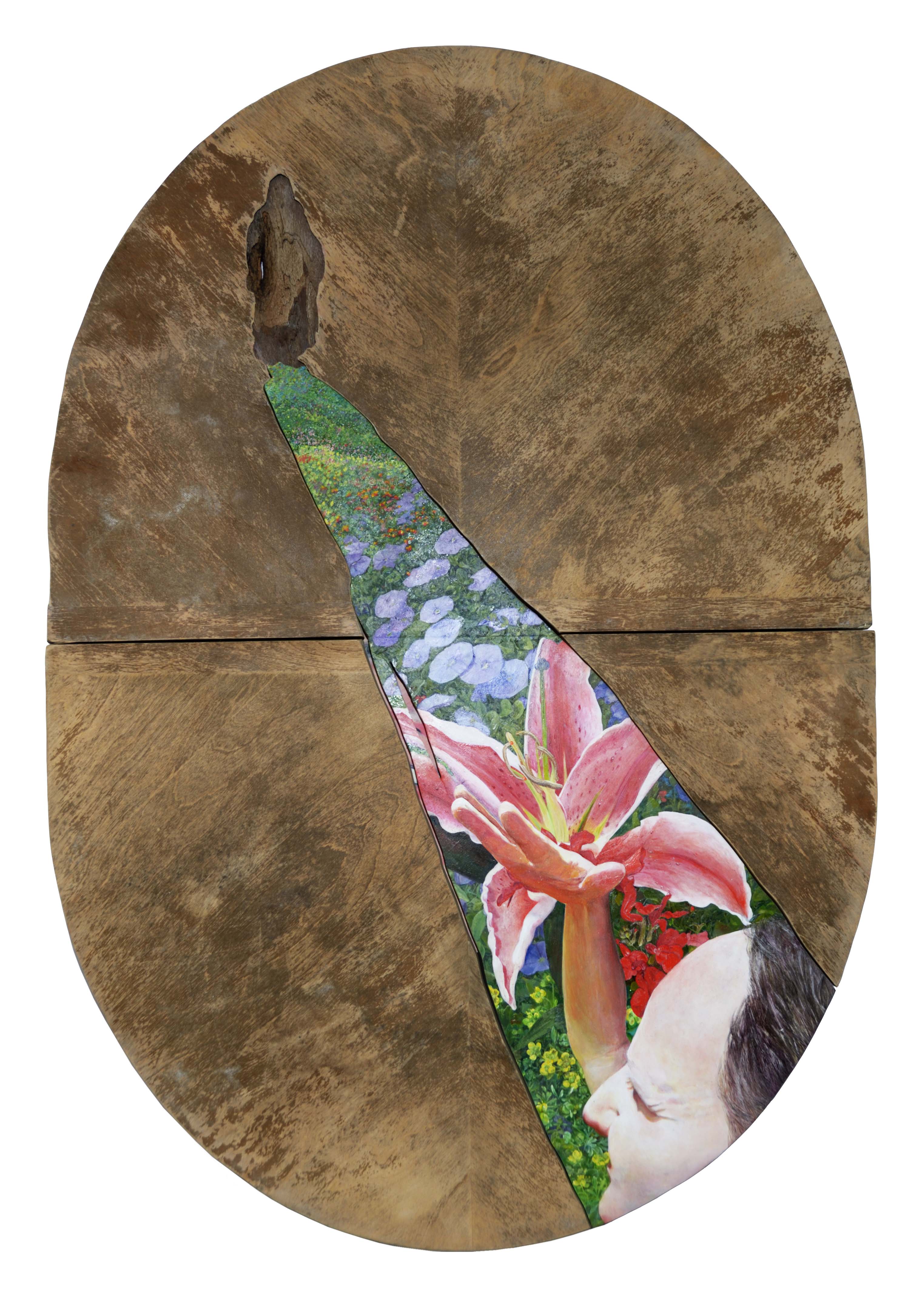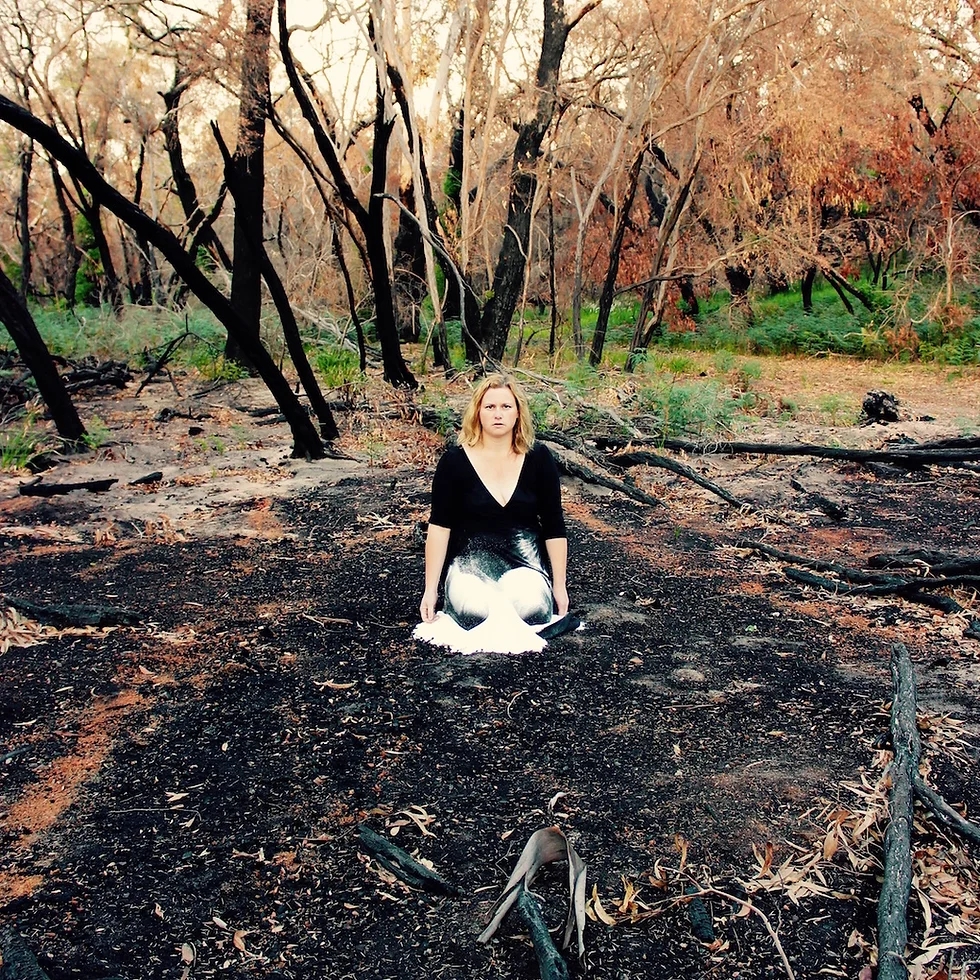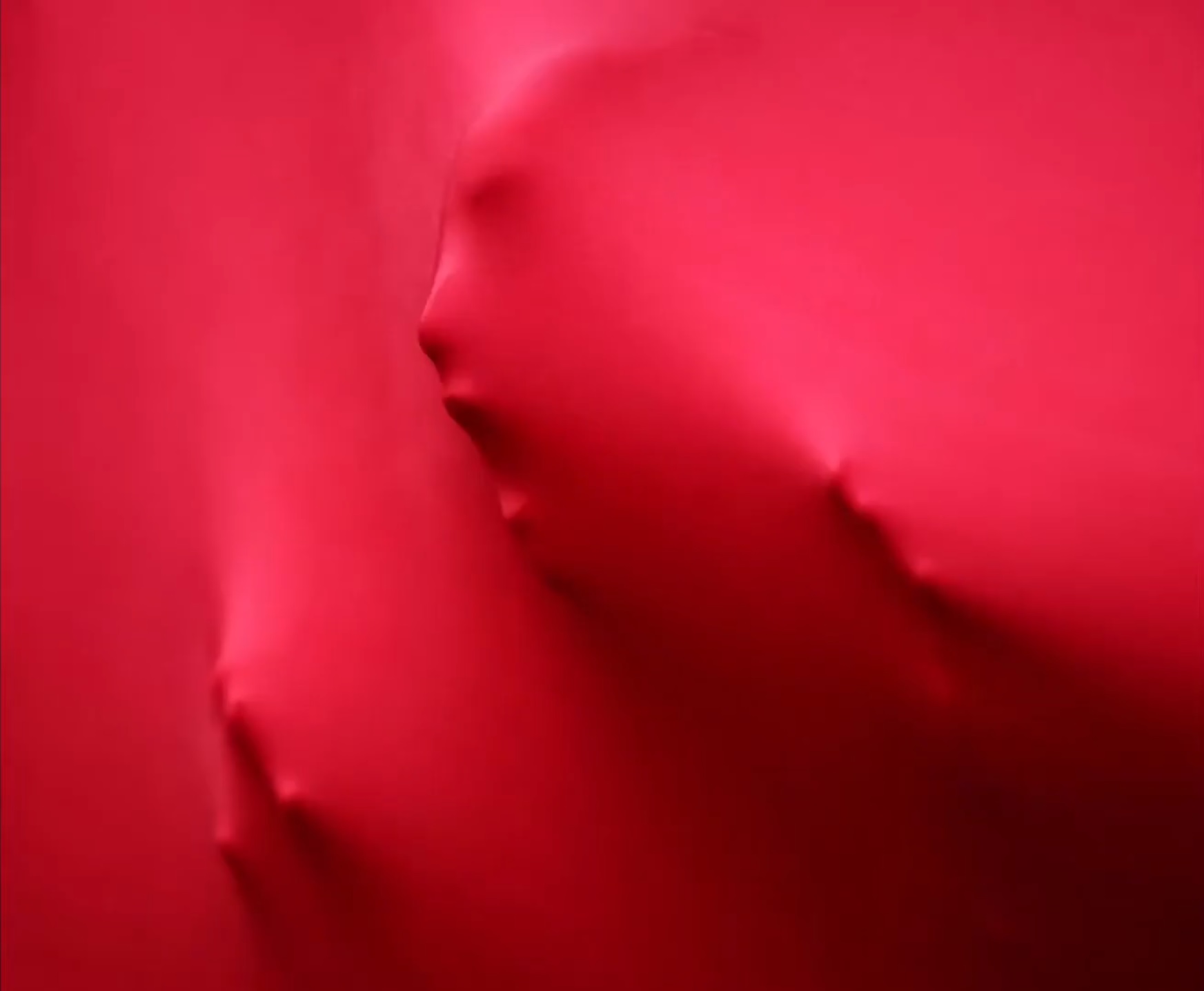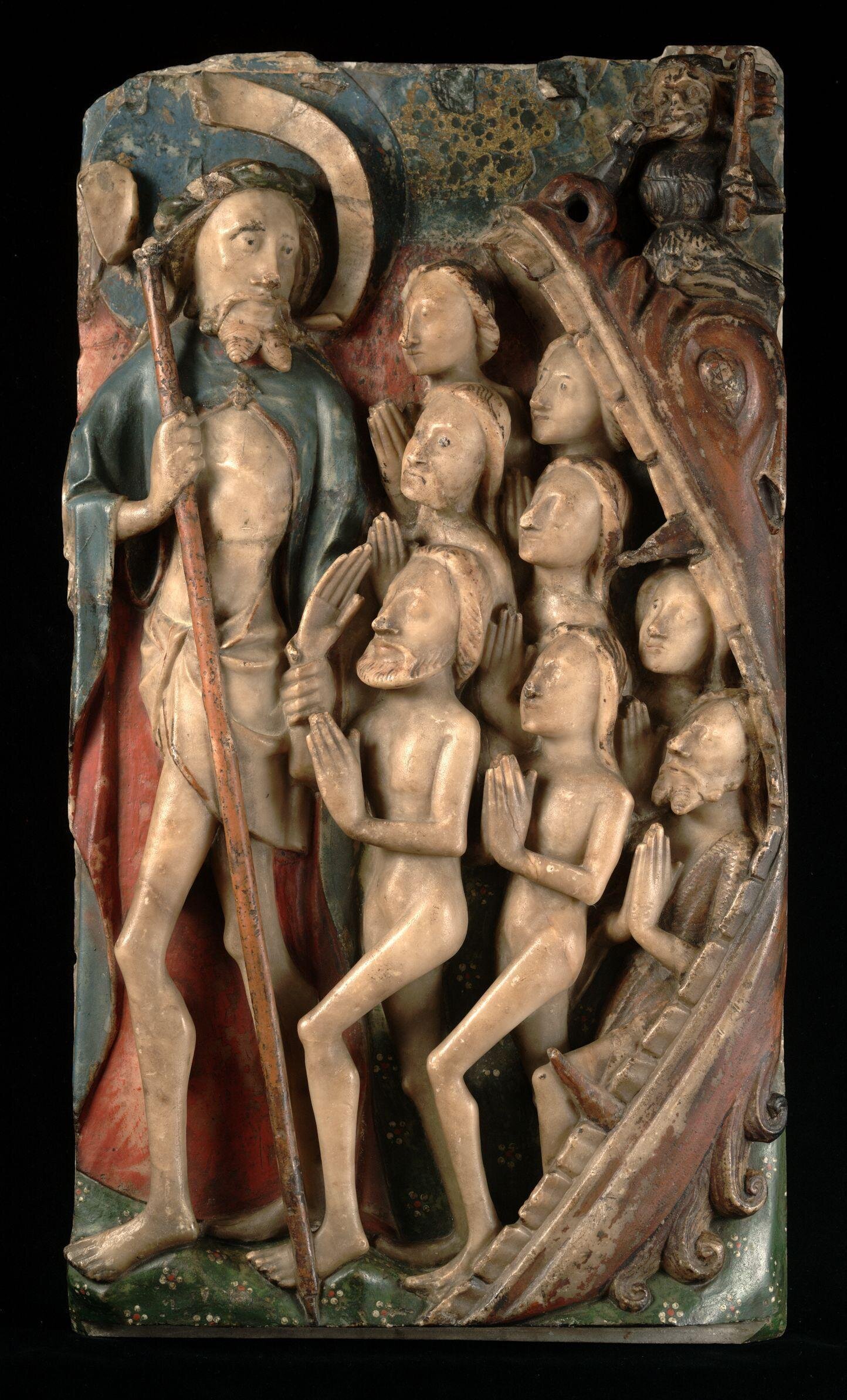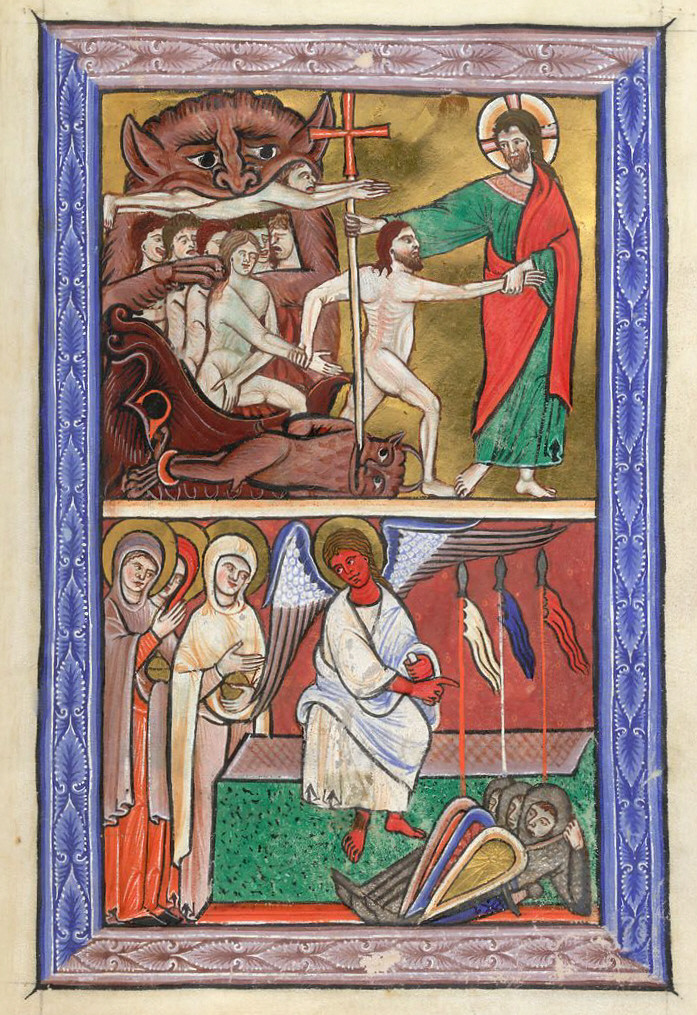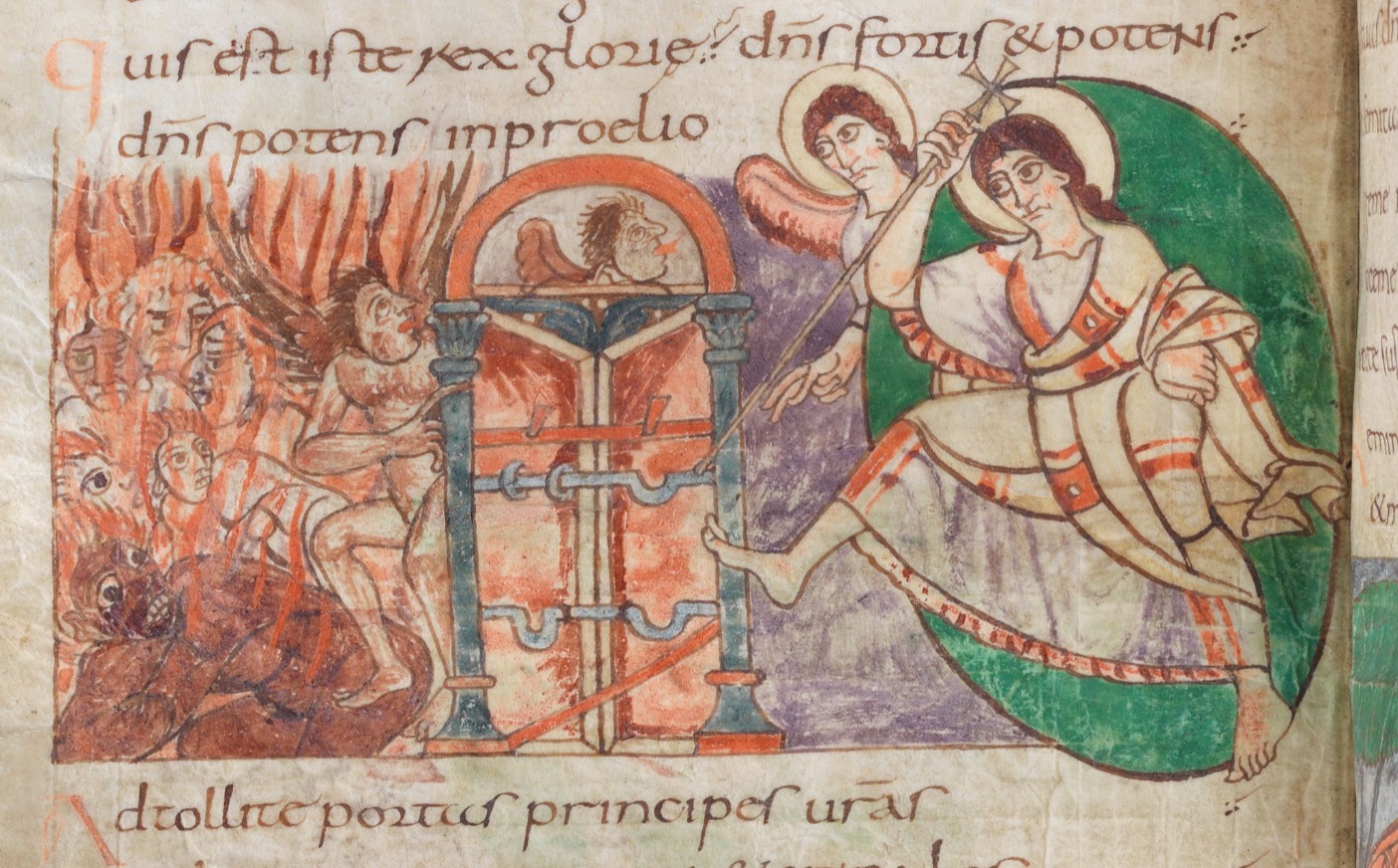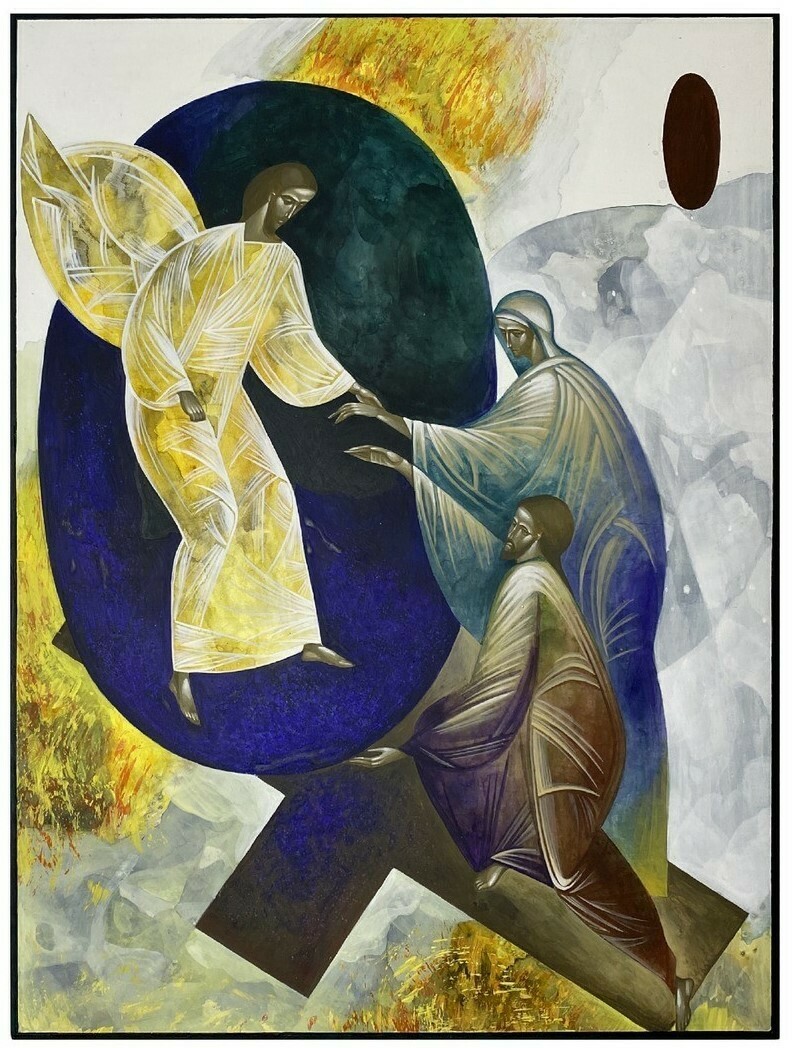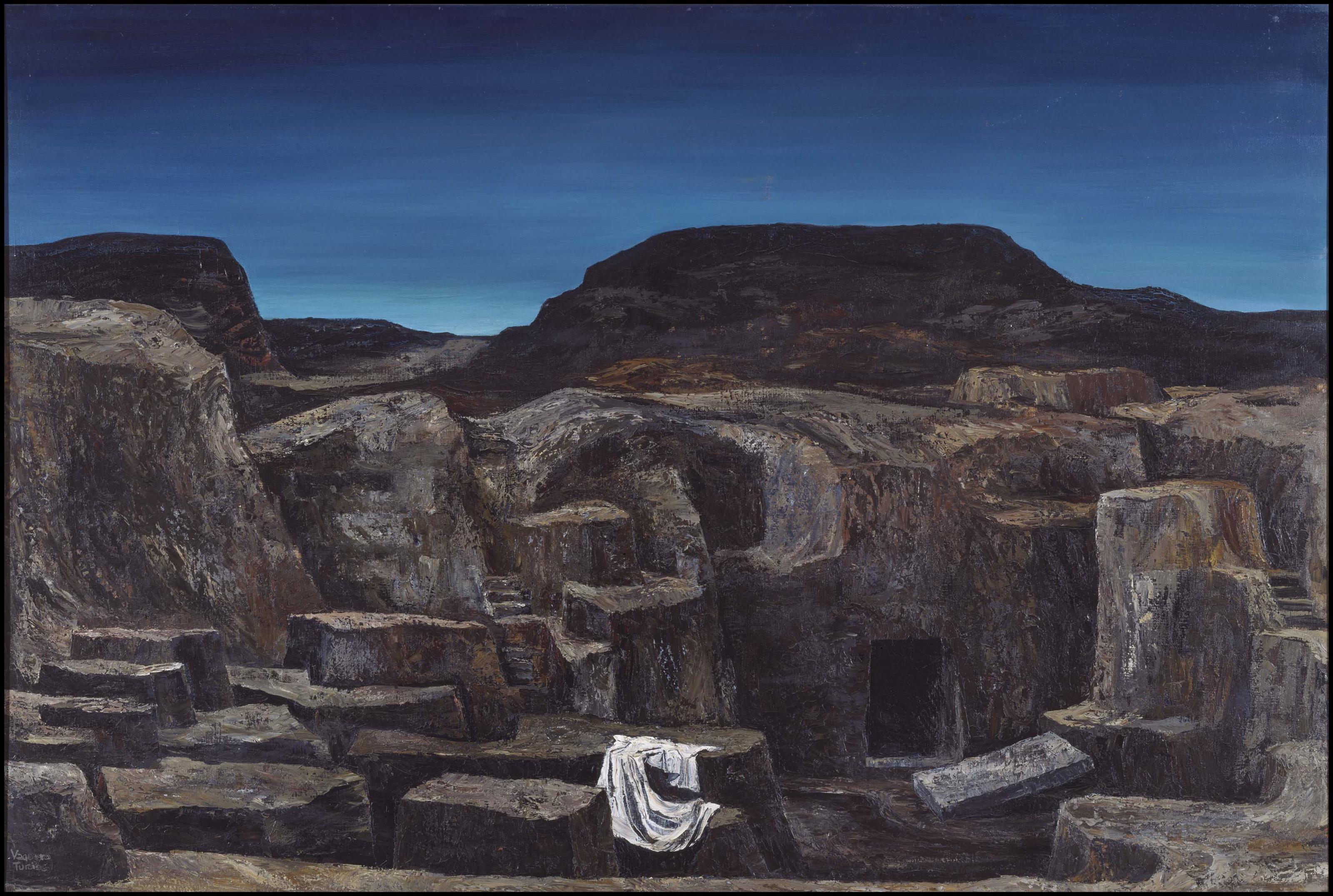Now on that same day two of them [to whom the women had reported the empty tomb] were going to a village called Emmaus, about seven miles from Jerusalem, and talking with each other about all these things that had happened. While they were talking and discussing, Jesus himself came near and went with them. . . . As they came near the village to which they were going, he walked ahead as if he were going on. But they urged him strongly, saying, “Stay with us, because it is almost evening and the day is now nearly over.” So he went in to stay with them.
—Luke 24:13–15, 28–29
LOOK: Road to Emmaus by Duccio
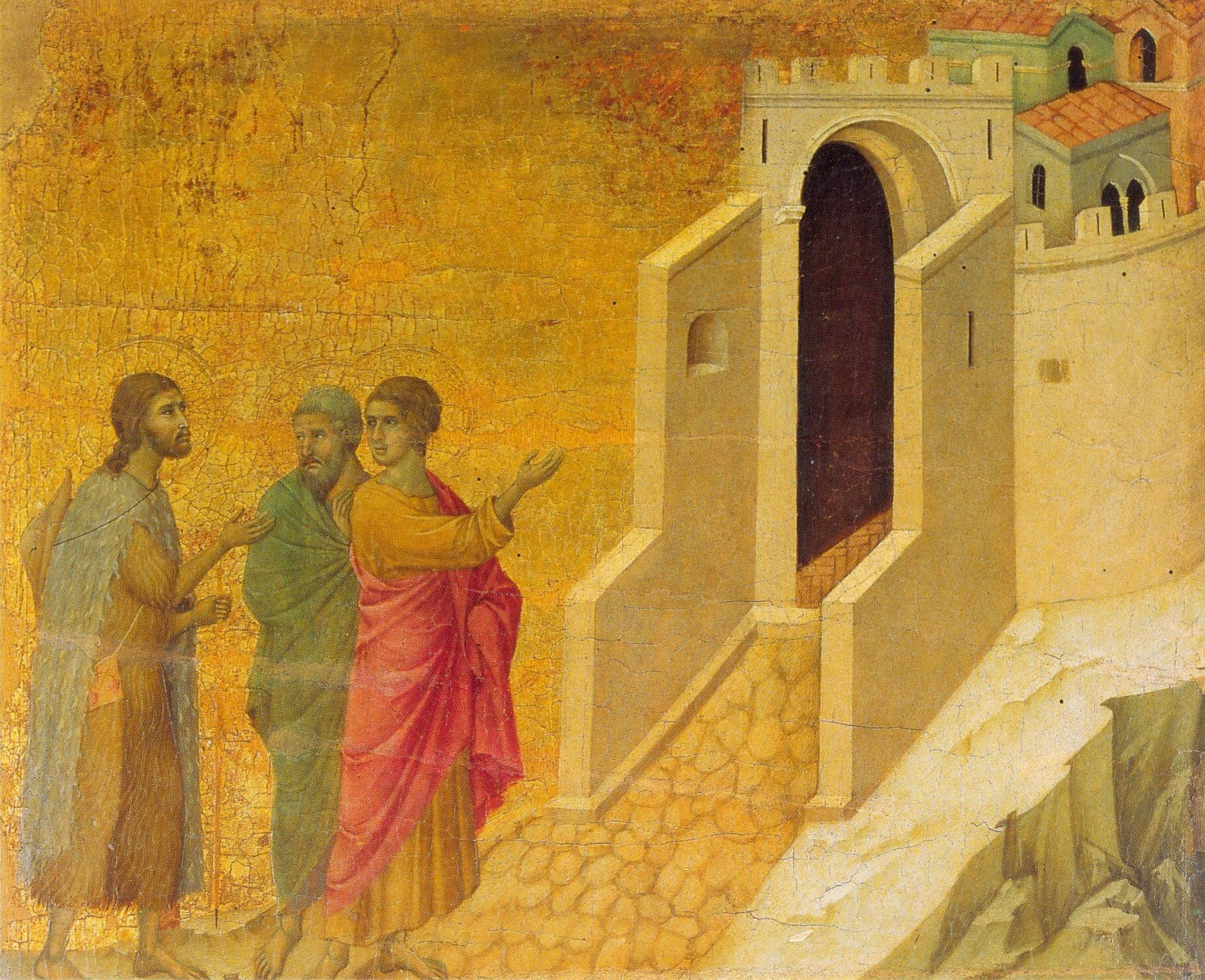
In his Road to Emmaus painting, the Sienese master Duccio portrays Jesus as a typical medieval pilgrim, wearing a woolen cloak, a satchel, and a wide-brimmed hat and holding a walking stick. This artistic choice was probably made in part to explain why his two traveling companions, Cleopas and an unnamed other, do not recognize him until later. Those two had been in Jerusalem for Passover and thus heard of the prophet Jesus’s being put to death and, just that morning, an angel supposedly appearing to a group of women saying he had risen. It was a wild week. Weary now from their seven-mile journey, they gesture toward the village of Emmaus. “Let’s get some food,” they suggest.
This panel is part of an enormous polyptych (multipaneled altarpiece) that originally stood at the high altar of Siena Cathedral in Italy. It’s called the Maestà (“Majesty”) altarpiece, after the primary panel of the enthroned Madonna and Child with saints and angels, and it’s one of the most significant artworks of the fourteenth century. Unfortunately, it was cut up in the eighteenth century and individual panels sold for private purchase. Therefore, several panels are now lost, and the rest are dispersed internationally across twelve museum collections, though many are held at the Museo dell’Opera Metropolitana in Siena.
The following two images are conjectural digital reconstructions that place the surviving paintings into the probable framework, based on documentary evidence. The front of the altarpiece contained fourteen scenes from the life of the Virgin Mary, and the back contained twenty-six scenes from the life of Christ. The Road to Emmaus is the last in the narrative sequence on the back (see arrow).
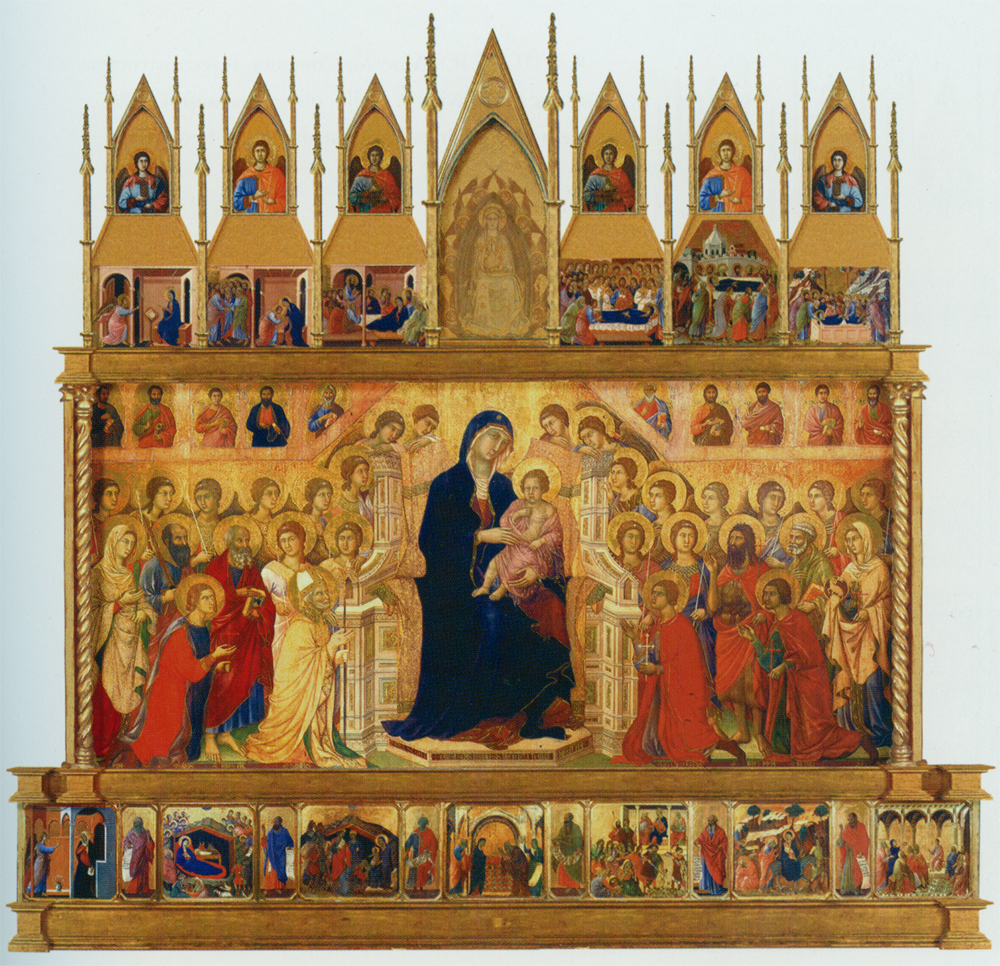
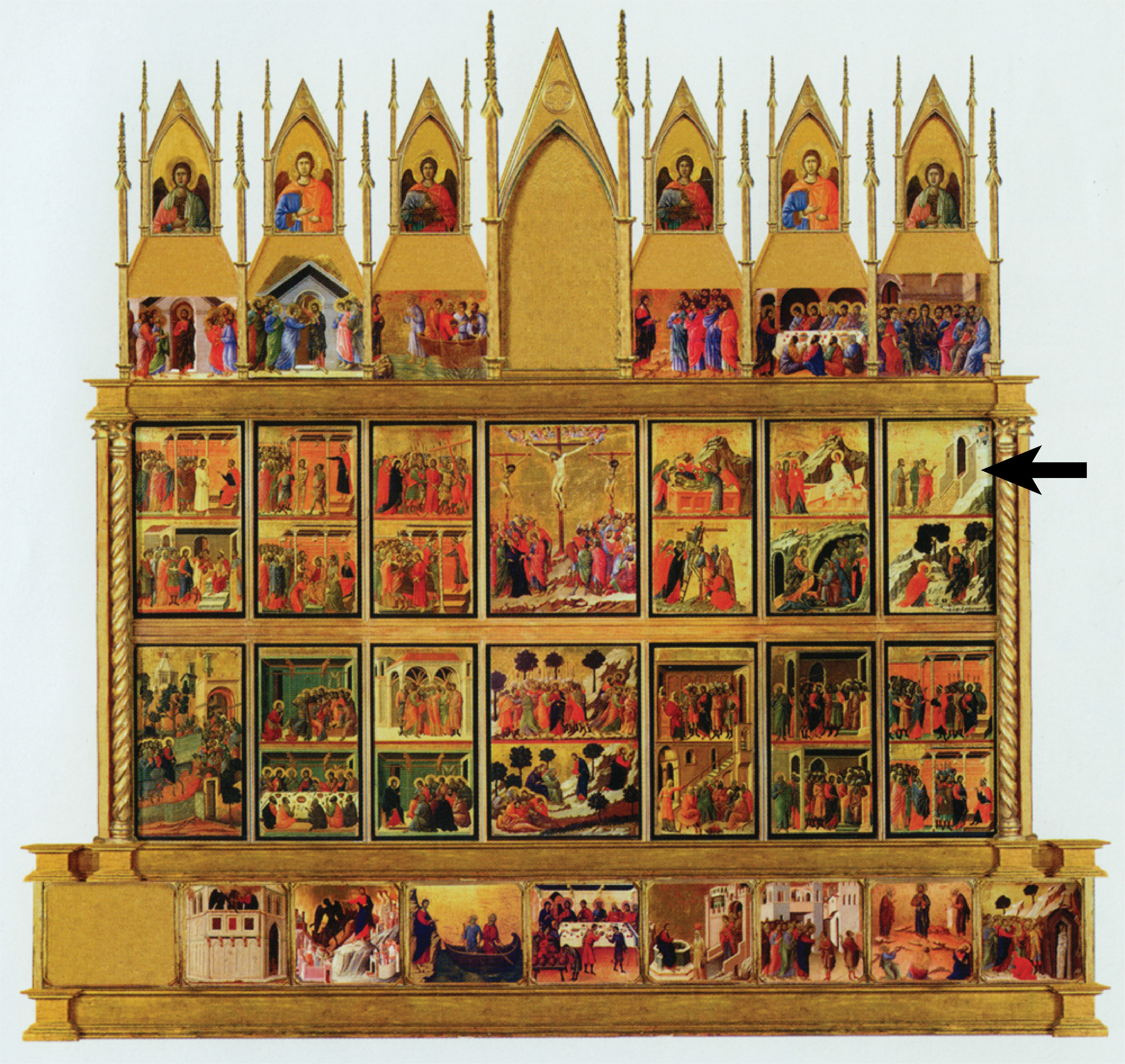
LISTEN: “Stay with Us” (Bli hos oss), op. 87, no. 3 by Egil Hovland, 1978 | Performed by the National Lutheran Choir, dir. David Cherwien, 2018 [HT]
Stay with us, Lord Jesus, stay with us.
Stay with us; it soon is evening.
Stay with us, Lord Jesus, stay with us.
It soon is evening and night is falling.Jesus Christ, the world’s true light!
Shine so the darkness cannot overcome it!
Stay with us, Lord Jesus, it soon is evening.
Stay with us, Lord Jesus, for night is falling.
Let your light pierce the darkness
And fill your church with its glory.
“Bli hos oss,” or “Stay with Us” in English, is the third of six choral pieces that comprise opus 87 of the Norwegian composer Egil Hovland (1924–2013). The main part of the text is based on Luke 24:29, where two pilgrims to Jerusalem are traveling back home after the feast of Passover in the company of, unbeknownst to them at the time, the risen Christ. When they reach the village of Emmaus, it’s time to turn in for the evening, and the two invite their fellow traveler to dine and lodge with them. (The text is ambiguous as to whether they live there or are merely stopping overnight at an inn or the home of a friend to rest.) He accepts. And it is at the dinner table there that Jesus reveals to them who he is.
This song is used in many churches for Vespers (evening worship) services during Eastertide. It invokes Christ’s presence, asking him to be with us through the night and to shine his light into places of spiritual or emotional darkness.
As we continue our journey through the liturgical year, may Christ be glorified in our hearts, in our homes and neighborhoods, in his church, and in the wider world, granting us the illumination, the awed recognition and joy, that he granted the two pilgrims who supped with him at Emmaus after his resurrection.


